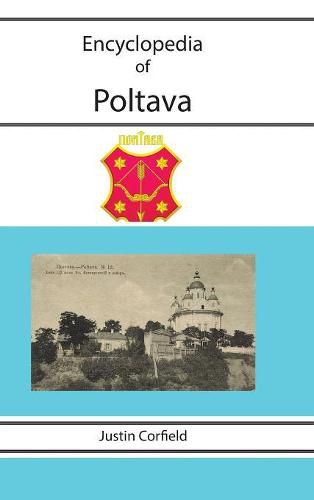Readings Newsletter
Become a Readings Member to make your shopping experience even easier.
Sign in or sign up for free!
You’re not far away from qualifying for FREE standard shipping within Australia
You’ve qualified for FREE standard shipping within Australia
The cart is loading…






This title is printed to order. This book may have been self-published. If so, we cannot guarantee the quality of the content. In the main most books will have gone through the editing process however some may not. We therefore suggest that you be aware of this before ordering this book. If in doubt check either the author or publisher’s details as we are unable to accept any returns unless they are faulty. Please contact us if you have any questions.
The city of Poltava in Ukraine has a unique place in the history of Eastern Europe. It was a significant local centre when the Swedish army lay siege to it in 1709. On 27 June (8 July, new style) of that year, the Swedes under Charles XII were defeated by a much larger Russian army. This led to the end of the Swedish Empire, and the victor of the battle, Russian Tsar Peter I becoming ‘The Great’.
In 1809 to commemorate the 100th anniversary of the battle, the Imperial Russian government started transforming Poltava which soon became a major centre of education for the region. Nikolai Gogol grew up nearby and Ivan Kotliarevsky spent most of his life in the city. Invaded in World War II, in 1943 German generals planned to depose Hitler when he was in Poltava, but the visit was cancelled. After being liberated by the Red Army, U.S. bombers were based at the city for raids on nearby on Axis targets.
A major tourist site on account of the 1709 battle, and also its many literary and cultural associations, Poltava has played a very important role in Russian and Ukrainian history. It is central to the understanding of Ukrainian identity and role played by Ivan Mazepa in 1708-09. This is the first major historical work on the city in English. It draws on English, Russian, Swedish and Ukrainian sources, and contains over 700 illustrations.
$9.00 standard shipping within Australia
FREE standard shipping within Australia for orders over $100.00
Express & International shipping calculated at checkout
This title is printed to order. This book may have been self-published. If so, we cannot guarantee the quality of the content. In the main most books will have gone through the editing process however some may not. We therefore suggest that you be aware of this before ordering this book. If in doubt check either the author or publisher’s details as we are unable to accept any returns unless they are faulty. Please contact us if you have any questions.
The city of Poltava in Ukraine has a unique place in the history of Eastern Europe. It was a significant local centre when the Swedish army lay siege to it in 1709. On 27 June (8 July, new style) of that year, the Swedes under Charles XII were defeated by a much larger Russian army. This led to the end of the Swedish Empire, and the victor of the battle, Russian Tsar Peter I becoming ‘The Great’.
In 1809 to commemorate the 100th anniversary of the battle, the Imperial Russian government started transforming Poltava which soon became a major centre of education for the region. Nikolai Gogol grew up nearby and Ivan Kotliarevsky spent most of his life in the city. Invaded in World War II, in 1943 German generals planned to depose Hitler when he was in Poltava, but the visit was cancelled. After being liberated by the Red Army, U.S. bombers were based at the city for raids on nearby on Axis targets.
A major tourist site on account of the 1709 battle, and also its many literary and cultural associations, Poltava has played a very important role in Russian and Ukrainian history. It is central to the understanding of Ukrainian identity and role played by Ivan Mazepa in 1708-09. This is the first major historical work on the city in English. It draws on English, Russian, Swedish and Ukrainian sources, and contains over 700 illustrations.